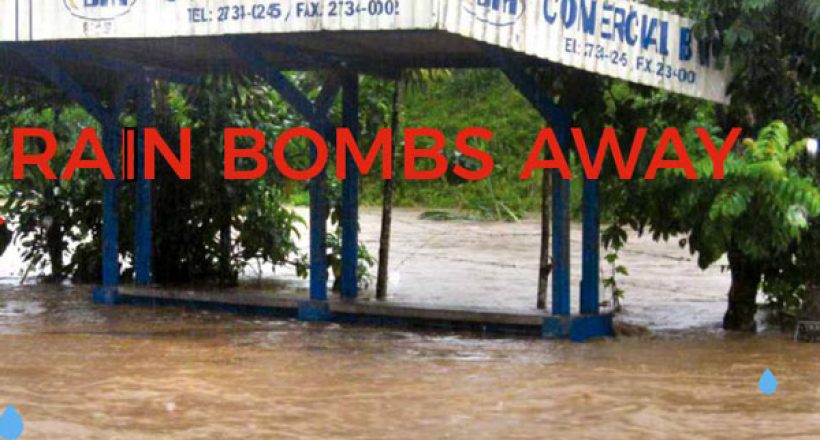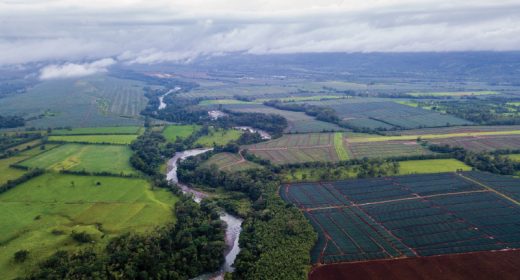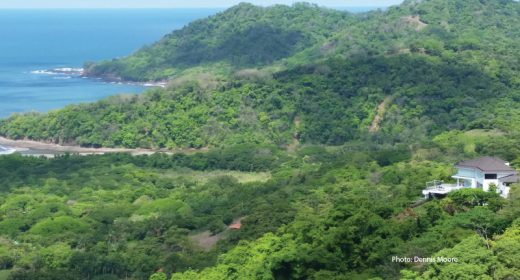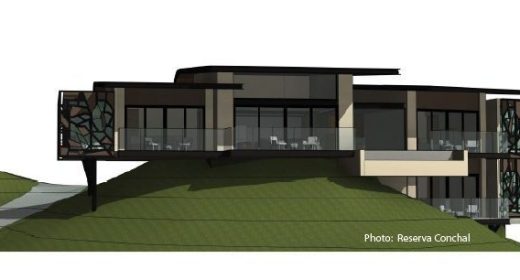
Environment – Rain Bombs Away
- SEP 04, 2017Warning: count(): Parameter must be an array or an object that implements Countable in /home/howlermag/public_html/old/wp-content/themes/new-paper/includes/general.php on line 193

Your Lead Paragrpah goes here
A woman in San José came home from work one day to find her entire back yard gone.
And it’s a hard, it’s a hard, it’s a hard rain’s a-gonna fall.
Bob Dylan
Seems like flashbacks to childhood can be evoked by a broad array of external stimuli. Sights, smells, the lyrics and melody of an oldie but goodie … all can trigger recollections. The non-stop cloud cover and moisture in Guanacaste a few months ago had me reminiscing about “June gloom.” That signature summer weather pattern of Southern California — late night and early morning low clouds and fog — used to plague our trips to the beach for months on end.
Granted, it’s hardly an accurate comparison. The basic problem in SoCal was that the surf was always blown out by the time we piled everybody into the ’58 Chevy wagon and lumbered through the bean and strawberry fields along the narrow road to Huntington Beach. Although Guanacaste’s gray-day boredom might have a similar psychological impact, at least the monotone of stuck-in-place weather is occasionally blasted by the spectacle of Mother Nature turning up the volume and putting on a show.
Case in point: After one such storm later in June, I drove 10 kilometers inland to pick up some banana plants. Including a brief stop for tortillas on the return trip, total elapsed time was maybe 40 minutes. Back home it looked like a rain bomb had hit while I was gone. Seeing the islands, channels and lakes of my seasonally flooded landscape transformed into a version of Venice is pretty cool.
Not everyone is so fortunate. Elsewhere in Guanacaste and various parts of the country, the intense early summer rains led to levels of inconvenience, damage and suffering usually associated with weaponry more conventional than just a bunch of water. A woman in San José came home from work one day to find her entire back yard gone. Somehow, it just disappeared down a slope during a day of heavy rains. Downpours closer to home saw the streets of Cartagena and Santa Cruz turn into rivers. San José and Cartago were faced with uncontrollable urban flooding in central, highly travelled, commercial districts. In Tamarindo, flooding along the road to Langosta drew comparisons to a trash barge simply offloading in the wrong place at the wrong time.
As yet, there are no easy solutions on the drawing boards. Like most problems, whether personal or political, the causes are many and interrelated. Blame is hard to accurately assign. Regular Howler readers may be bored stiff with my repeated beating of the drum on this issue, but the widespread flooding in 2017 — just like the preceding drought years — only underscores that we have a lot of ground to cover before we’re out of the woods.
Recent rainfall intensity studies show that a one-degree Centigrade rise in temperature can increase the amount of rainfall by up to 15 percent. That amount alone is sufficient to overwhelm the capacity of everything from roof gutters and downspouts to sidewalk curbs and under-road culverts — in short, the whole gamut of runoff control infrastructure. We’re seeing those impacts globally and have less time to get things in order than previously thought.
Here’s an experiment … you can, in fact, “try this at home.” Type the words “faster than predicted” into Google and start scrolling through the results. You’ll find everything related to climate change — from the CO2 increase that causes it to temperatures and sea level rises, to human and animal migrations, severe weather … and on and on. The whole basket of consequences is landing on us like a “cabeza de agua” rushing down an arroyo in Guanacaste.
Costa Rica, especially Guanacaste, would be wise to borrow a page from the strategy of the Dutch. Build a landscape spanning everything from farming systems, parking garages and parks to sunken urban areas and more. Let water in and infiltrate it to pump up the aquifers. Once you’ve got the expertise, capitalize on it by consulting to other tropical countries. It’s high time to take off the blinders and put on our thinking caps.









